 W
WAndhra Natyam comprises Aagama Narthanam, Aasthana Narthanam and Prabhandha Narthanam. Andhra Natyam is performed by both men and women.
 W
WCheraw dance is a traditional cultural dance performed in Mizoram, India, consisting of mostly six to eight people holding a pairs of bamboo staves on another horizontally placed bamboo on the ground. The male performers then clap the bamboos rhythmically while groups of female dancers dance in intricate steps between the beating bamboos. It is the most famous and beautiful dance in Mizoram, and is the center of attraction during festive occasions. Similar dances are found in the Far East and in the Philippines.In the Philippines they have a similar dance called Tinikling that also uses bamboo sticks. A Guinness World Record was made in 2010, when a large number of cheraw dancers danced together at the same time.
 W
WDarika is a character in Mudiyettu, a ritualistic dance from the Bhagavathi or Bhadrakali worship, usually performed only in the Kali temples of Kerala. The story is also known as "Darika vadham", or "murder of Darika".
 W
WDhalo is a popular ritual folk dance form Goa, India. The dance is performed by women and serves as a prayer of protection for their households. The songs to which the dance is performed are usually sung in Konkani language or Marathi.The themes of such songs are commonly religious or social in nature. It is conducted over a period of 1 week in the month of Pousha at the onset of winter. On the final day women dress up elaborately and draw caricatures of men.
 W
WDuffmuttu is an art form prevalent in the Malabar region of the state of Kerala in south India. It derives its name from the duff, a percussion instrument made of wood and ox skin. The word duff is of Arabic origin and is also called a thappitta.
 W
WGarudan Thookkam is a ritual art form performed in certain Kali temples in some Central Kerala districts in south India. The people who dress up as Garuda perform the dance. After the dance performance, the hang-designate dangle from a shaft hooking the skin on his back. In some places, the ritual is performed colorfully with Garudas taken in a procession on bullock carts or boats or hand pulled carts. It will be available in Devi temple during the festival of Meena bharani and Pathamudayam in Thiruvanchoor in Kottayam district.
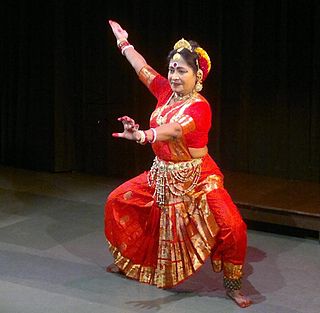 W
WGaudiya Nritya or Gauriya Nritya, is a Bengali dance tradition. It originates from Gauda, also known as Gaur, in Bengal.
 W
WIn Assam, north India, gayan-bayan (gāyan-bāyan) is a religious dance performed by disciples of Sankardev in satras.
 W
WGiddha is a popular folk dance of women in Punjab region of India and Pakistan. The dance is often considered derived from the ancient dance known as the ring dance and is just as energetic as bhangra; at the same time it manages to creatively display feminine grace, elegance and flexibility. It is a very colourful dance form which is now copied in all regions of the country. Women perform this dance mainly at festive or social occasions. The dance is followed by rhythmic clapping and a typical traditional folk song is sung by the aged ladies in the background.
 W
WGombhira is a type of song originating in the Bengal region in the eastern part of the Indian subcontinent, what is today northeastern West Bengal, India and northwestern Bangladesh.
 W
WJhumair or Jhumar is an Indian folk dance from the Indian states of Bihar, Jharkhand, Chhattisgarh, Odisha and West Bengal. It is folk dance of Sadan, the non-tribal people of Chotangpur region. It is quite famous among Tea-garden community of Assam.
Jhumar or Jhoomar is a lively form of music and dance that originated in the Multan and Balochistan, also thrived in Sandalbar areas of Punjab. It is slower and more rhythmic form. The word "Jhumar" comes from Jhum/Jhoom, which means Swaying. The songs evoke a quality which reminds of swaying. Though the content of these songs is varied - they are usually love with emotional songs too. The Jhumar is a dance of ecstasy. Jhumar is performed at the wedding ceremonies usually. It is a living demonstration of the happiness. The dance is mostly performed by the Balochi and people of Southern and central Punjab. The emphasis of Jhumar is recreating the gaits of animals and birds. The movement of animals, the ploughing of the field, sowing of seeds and harvesting are shown in the original progression. The dance is also performed in circle, to the tune of emotional songs.
 W
WKangeelu or Kangilu is a traditional folk dance of particular significance to the Udupi and Karnataka communities of India. It is a spiritual form of dance performed by the Mandal community. Kangilu is performed only on the day of a full moon, and it is believed to keep away disease, evil spirits, and other negative energy, and to foster peace, harmony, and a community spirit. Kangeelu is not purely dancing, but a dance act. There are 5–12 members in the group wearing the same costumes and makeup.
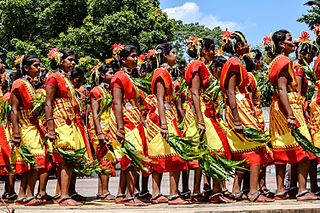 W
WKarma dance or Karma Naach is a traditional dance of central and Eastern India annually performed during the karma festival. Karma is a famous autumnal festival, it starts from the 11th day of the bright fortnight of the month of Bhadrab. It is performed in State of Chhattisgarh, Jharkhand, Madhya Pradesh, Odisha and West Bengal. Karma means 'fate'.
 W
WThe Khajuraho Dance Festival, organised by the Madhya Pradesh Kala Parishad, is a one-week festival of classical dances held annually beside the Khajuraho temples in Chhatarpur district of Madhya Pradesh state in central India. The festival is conducted in February from the 20th to the 26th.
 W
WKolam Thullal is a ritual dance form prevalent in south Kerala, southern India. It is customary in houses and temples of Bhagavathy, a female deity. It is performed at temple festivals and to drive away evil spirits from the "possessed" bodies. Its origins lie with the Tinta group of the Kaniyar caste. The ritual is similar to the Tovil and Kolam rituals of the Sinhalese people in Sri Lanka
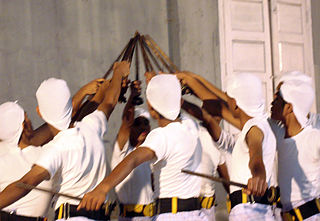 W
WKolkali is a folk art performed in North Malabar region of Kerala, India. The dance performers move in a circle, striking small sticks and keeping rhythm with special steps. The circle expands and contracts as the dance progress. The accompanying music gradually rises in pitch and the dance reaches its climax. Kolkali is now a popular event in Kerala School Kalolsavam, which is considered as the biggest cultural event of Asia. There are two styles of Kolkali: the actual Kolkali and Thekkan Koladi. The actual Kolkali consists of Thacholikali, Rajasooyam etc. The actual kolkali is almost at verge of extinction and Thekkan Koladi is still alive as it is added in state kololsavams.
 W
WMangalamkali is a dance ritual related to marriage functions as a form of entertainment. Usually mavilas (a tribe in kasaragod and kannur districts Kerala perform this. Certain music instruments too are used like thudi. The dance movement gradually become fast.
 W
WMatki Dance is mostly performed in the Malwa region of Madhya Pradesh, India. It is a solo dance performed by ladies on special occasions like weddings, birthdays, or any other special occasion. In the Hindi language, matki means a small pitcher or a small earthenware pot. In this dance, the ladies are dressed in sarees or in lehanga decorated with many ornaments. The main musical instrument used in this dance is the dhol. Matki dance is generally performed in a circular position. Women balance an earthen pot on their head. They also have a veil on their face.
 W
WMayilattam (Tamil:மயிலாட்டம்) is an artistic and religious form of dance performed in the Hindu temples of Tamil Nadu and Kerala in reverence to Lord Subrahmanya.
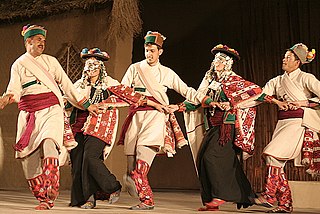 W
WNati is a traditional folk dance practiced in the Western and Central Hills of the Indian subcontinent. It is primarily native to the states of Himachal Pradesh and Uttrakhand. Nati is traditionally performed in the Kullu, Shimla, Sirmaur, Chamba, Kinnaur, Uttarkashi, Dehradun(Jaunsar-Bawar) and Tehri Garhwal districts however, due to high immigration of ethinic paharis in the plains, this dance has been made popular in the plains too. Traditionally, locals dance to the beats of percussion instruments called Dhol-Damau. The dance is listed in the Guinness Book of World Records as largest folk dance.
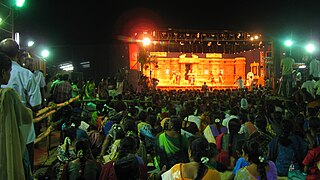 W
WNatyanjali is an annual dance festival commemorating Hindu deity Shiva. It originated around 1981, and started off as a relatively obscure event. It is currently organized by collaborative efforts of the Department of Tourism of Tamil Nadu and the Natyanjali Trust. Although celebrations are most prominent at its original venue, the 12th-century Chidambaram temple, they also occur in a wider spectrum across Tamil Nadu and Murugan temples. Mumbai also organize their own versions of the festival under the same banner. The current version lasts around 13 days, and various classical dance forms of all styles offer their art up to the god Nataraja. Senior gurus have been performing on Shivarathri night year after year.
 W
WOjapali is a traditional Shamanistic type of indigenous folk dance from the Assam Northeastern region of India. Ojapali is believed to have evolved from Kathakata tradition and is performed in a group; it is believed to be one of the oldest art forms of Assam. Originally evolved in the Kamata state the western and northern part of river Brahmaputra later limited to Darang area under the patronisation of Darangi King Dharmanarayana. The repertoire of this performance consists of songs, dialogues, gesture, improvised acting and dramatisation etc. The group consists of an Oja, who leads the performance and four or five palies, who supplement the performance with continuously playing cymbal. Among the Palies Daina pali who stand on the right-hand side of the Oja is the active one and he and Oja take the performance forward. Many believe that Shankardev took inspiration from Ojapali to create his Ankiya Bhaona. More over he also created his own Sattriya Ojapali. Generally Darangi Suknanni Ojapali sings the lyrics written by Sukabi Narayanadeva in Padmapurana. Padma Purana covers the story of serpent goddess Maroi.
 W
WOppana is a popular form of social entertainment among the Mappila community of Kerala, South India, prevalent throughout Kerala, especially in Malappuram. The Term Oppana is believed to be originated from the Arabic word "Affna" Oppana was originated on the occasion of make of Muslim brides.. But in Kerala, this art form has been revived with much popularity on the performing stages of the Youth Festivals of the student community.
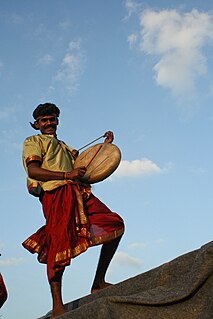 W
WParai Attam is a special type of dance in Tamil culture in which folks beat parai and dance to its rhythm.
 W
WThe peacock dance or peafowl dance is a traditional Asian folk dance that describes the beauty and the movement of peacocks. There are several peacock dance traditions developed in Asia, among others are peacock dances of Myanmar, and in the western and northern parts of Cambodia, West Java in Indonesia, also peacock dances of Indian subcontinent in Southern India, Sri Lanka, and Bangladesh.
 W
WPerini Sivathandavam or Perini Thandavam is an ancient dance form, from Telangana, which has been revived in recent times. It originated and prospered in Telangana, during the Kakatiya dynasty. Perini is performed in honour of Lord Siva, the hindu god of destruction and it is believed that in ancient times this was performed before the soldiers set to war. Padmasri Dr. Nataraja Ramakrishna was the person who revived this art form recently.
 W
WPoorakkali is a traditional dance ritual performed by men during the nine-day Pooram festival in Bhagavathy temples across North Malabar in Kerala State of south India.
 W
WPoothamkali is folk art form in state of Kerala, India. This art form uses various types of decorations in the costume. It is usually performs in the Bhagavathy temples of Malappuram district. It is based on the myth of durga and her combat with Darika asura.
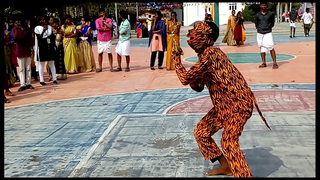 W
WPuliyattam is an old folk art dance of Tamil country. A highly exuberant and cultural festival, this dance form usually comprises a troupe of 6 performers aping the movements of the majestic, predatory tigers. Their bodies are painted by the painstaking efforts of local artists in vibrant yellow and black to resemble an exact replica of a tiger. The paintings include the ferocious looking fangs and convincing headgear replete with ears, paws with claws, and a long tail that conjures an accurate picture of the savage beast’s graceful movements.
 W
WThe Pung cholom is a dance form originated from Manipur, which is the soul of the Manipuri Sankirtana music and the classical Manipuri dance. The Pung cholom is a unique classical dance of Manipur. This dance may be performed by men or women and is usually a prelude to the Ras Lila. In this style, the dancers play the pung while they dance at the same time. Dancers need to be graceful and acrobatic at the same time. They use these acrobatic effects without breaking the rhythm or flow of music. The dance is marked by a gentle rhythm, which gradually builds up to a thunderous climax. Pung cholom borrows elements from the Manipuri martial arts, Thang Ta and Sarit Sarak and also from the traditional Maibi Jagoi dance.
 W
WPushpanjali is an offering of flowers to Hindu deities.
 W
WRaibenshe, alternatively, Raibeshe, is a genre of Indian folk martial dance performed by male only. This genre of dance was once very popular in West Bengal. Presently, it is performed mostly in Birbhum Bardhaman and Murshidabad districts.
 W
WShiva Raichandani is a multidisciplinary non-binary Indian artist whose work exists at the intersections of creating positive gender-diverse representation in mainstream media, addressing mental health stigma, and using the performing arts to drive positive social change.
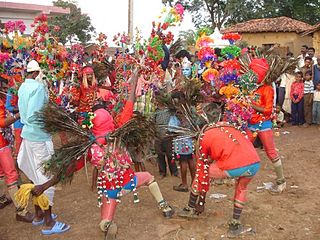 W
WRaut Nacha is a dance performed by Yadavas, a caste which considers themselves to be descendants of Krishna. For them it is as a symbol of worship to Krishna. They perform the dance at the time of 'dev udhni ekadashi'. It is believed that it is time of awakening of Gods after brief rest according to Hindu panchang (calendar).
 W
WYamini Reddy is Indian classical dancer, a kuchipudi exponent.
 W
WTemple dance denotes a religious performance held in the temples, such as sadir, prescribed by Agamas. Traces of these ancient temple dances of India are seen in Bharatanatyam and Odissi.
 W
WThirayattam is a ritual performing ethnic art form of the South Malabar region in Kerala state, India. It blends dance, theatre, music, satire, facial and body painting, masking, martial art and ritualistic function. This vibrant art form has a great resemblance to the traditions and customs of the ancient civilization. Thirayattam usually enacted in courtyards of "kaavukal" and village shrines of south Malabar region in Kerala. Traditionally, the "Perumannan" community has the right to perform this magnificent art form in "kaavukal". Today, the members of "Panan" and "Cherumar" communities also perform Thirayattam. The performer comes into a trance with "Moorthy" or deity whose "Kolam" is enacted and moves vigorously, exhibiting belligerent mannerism and gestures, believed to be divine.